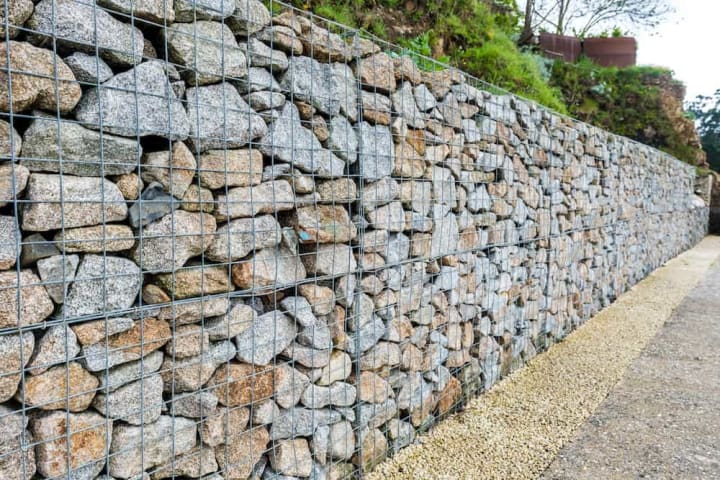
Transforming a steeply sloped garden into a breathtaking landscape might seem like a daunting task, but with the strategic use of retaining walls, it becomes not only possible but also an exciting opportunity for creativity. Retaining walls offer a practical and aesthetically pleasing solution to various landscaping challenges, from combating erosion to adding structural depth to flat terrains. These structures are especially valuable, turning problematic areas into functional, beautiful outdoor living spaces.
Whether you're envisioning terraced gardens, raised beds, or elegant seating areas, retaining walls provide the foundation for realising these ideas. By selecting from materials like natural stone, timber, or concrete, you can design a wall that perfectly complements your garden's existing aesthetics and your personal style. Let's explore how retaining walls can revolutionise your garden, ensuring it's not only visually striking but structurally sound for years to come.
The Importance of Retaining Walls
Retaining walls are more than just decorative features; they play a crucial role in landscape architecture. By providing essential support to prevent soil from sliding or eroding, these walls safeguard your garden against the natural elements. This is particularly important in areas with heavy rains or steep slopes, where water runoff can cause significant erosion. Beyond their functional benefits, retaining walls also maximise usable garden space, allowing for the creation of flat, usable areas within sloped terrains.
Types of Retaining Walls
There's a variety of retaining wall types to fit every need and aesthetic preference. Gravity walls rely on their weight to hold soil, while cantilevered walls are designed with a footing that resists pushing into the retained soil. Sheet piling walls, made from steel, wood, or vinyl, are driven into the soil and are ideal for tight spaces. Lastly, anchored walls, which can be any of the aforementioned types with added anchors, provide extra strength for higher loads.
Key Considerations When Designing and Planning a Retaining Wall
Designing a retaining wall requires thoughtful planning. Consider the location and the type of soil, as these factors determine the wall's design and necessary materials. The wall's height and the slope it needs to support also influence its construction method. It's important to consider drainage solutions to prevent water from building up behind the wall, which can lead to pressure and potential failure.

Steps to Building a Retaining Wall in Your Garden
* Planning and Design: Start by assessing your garden's needs and the wall's objectives. This step includes choosing materials and determining the wall's height and length.
* Preparation: Clear the area where the wall will be built, removing any debris and vegetation.
* Foundation: Lay a solid foundation of compacted gravel or concrete to ensure stability.
* Construction: Begin building the wall, layer by layer, ensuring each layer is level and securely in place.
* Drainage: Implement a drainage system behind the wall to avoid water pressure buildup.
* Backfilling: Once the wall is built, backfill with gravel and soil as needed.
Benefits of Retaining Walls in Landscaping
Retaining walls offer numerous benefits, including preventing erosion, creating functional garden spaces, and adding aesthetic value to your property. They can also increase property value by enhancing the overall look and usability of your outdoor space.
Innovative Ideas for Incorporating Retaining Walls into Your Garden Design
Get creative with your retaining walls by incorporating steps, integrating seating areas, or creating raised garden beds. Use them to carve out a patio space or to frame a focal point in your garden, such as a water feature or sculpture.
Maintaining and Caring for Your Retaining Walls
Regular inspection and maintenance are key to the longevity of your retaining wall. Keep an eye out for signs of damage or erosion and ensure the drainage system remains clear and functional. Cleaning the wall's surface and removing any vegetation that might grow into the structure will also help preserve its integrity and appearance.
Hiring a Professional for Your Retaining Wall Project
While some may opt for a DIY approach, hiring a professional is advisable for most retaining wall projects. Professional landscapers and engineers have the expertise to design and construct walls that are not only beautiful but also structurally sound and compliant with local regulations.
Retaining walls are powerful tools in transforming challenging landscapes into stunning garden spaces. With careful planning, the right materials, and professional guidance, you can leverage these structures to create a functional and beautiful outdoor area that enhances your home's value and your quality of life. Don't let a sloping garden limit your outdoor aspirations; embrace the potential of retaining walls and watch your garden's transformation unfold.





Comments
beyond is not accepting comments at the moment
Want to show your support? Send them a one-off tip.